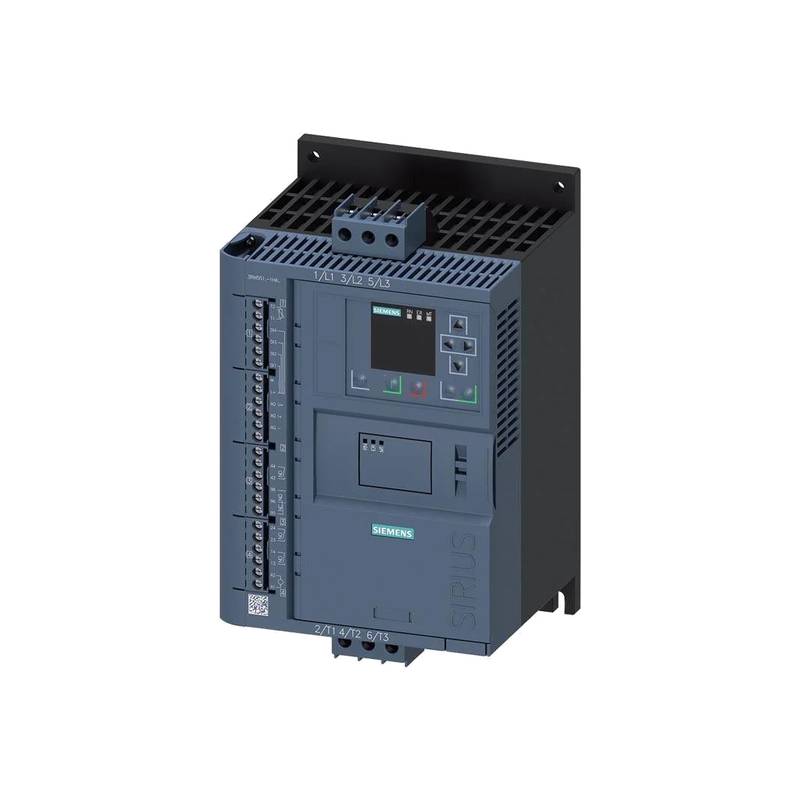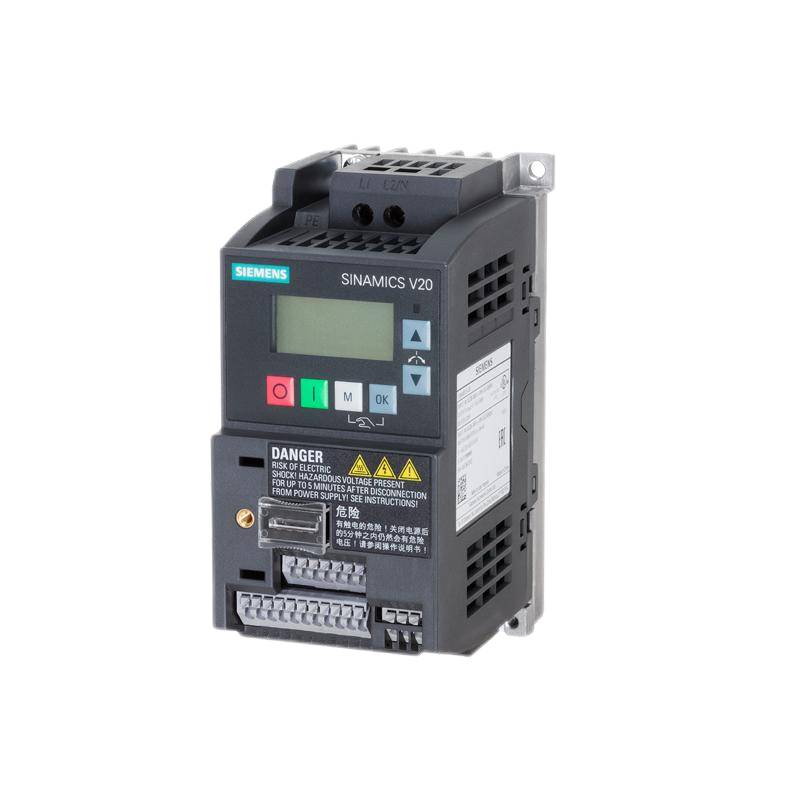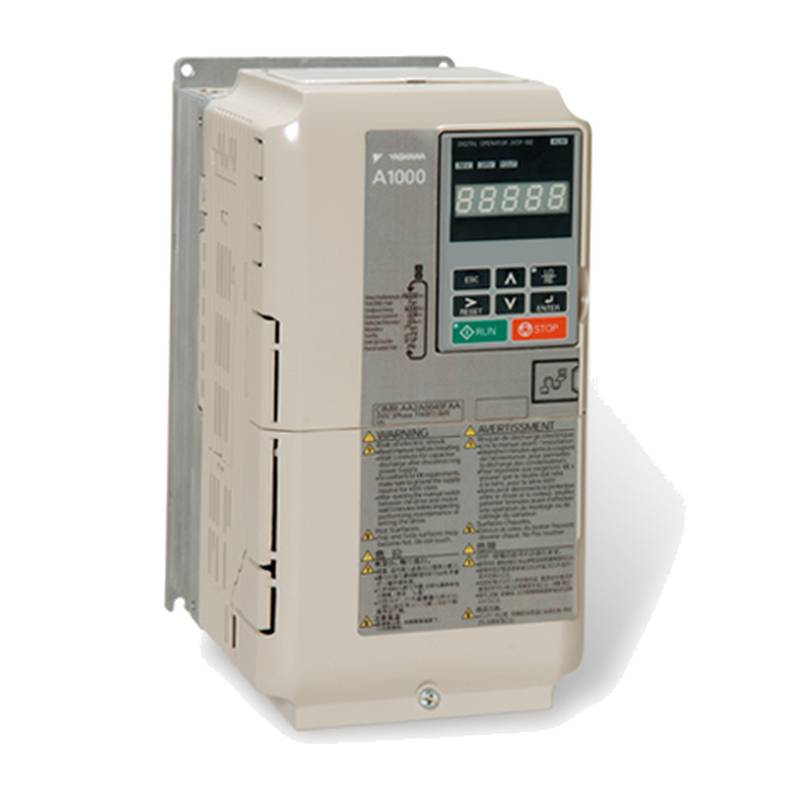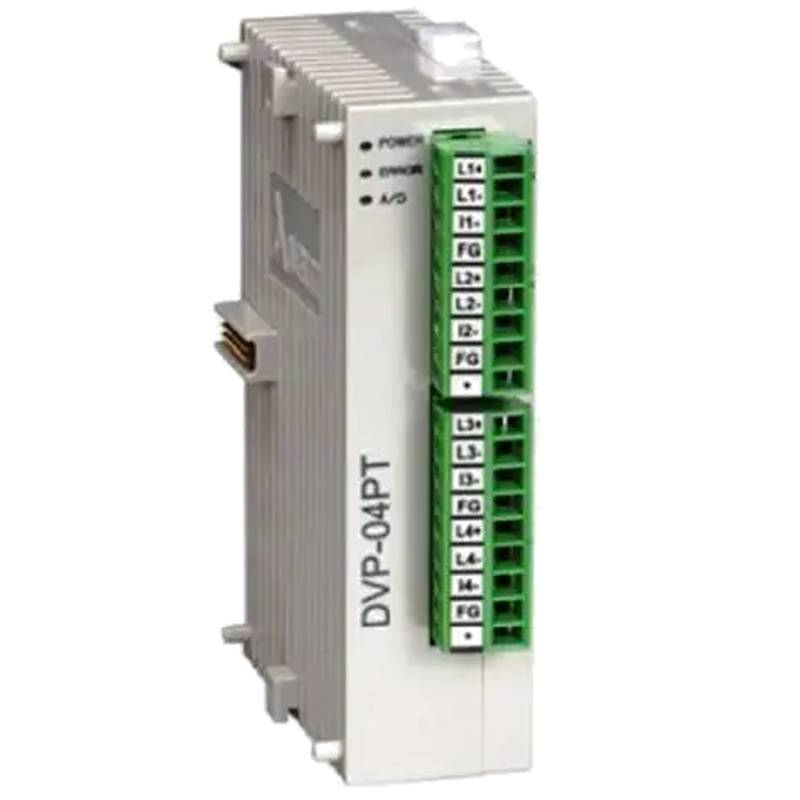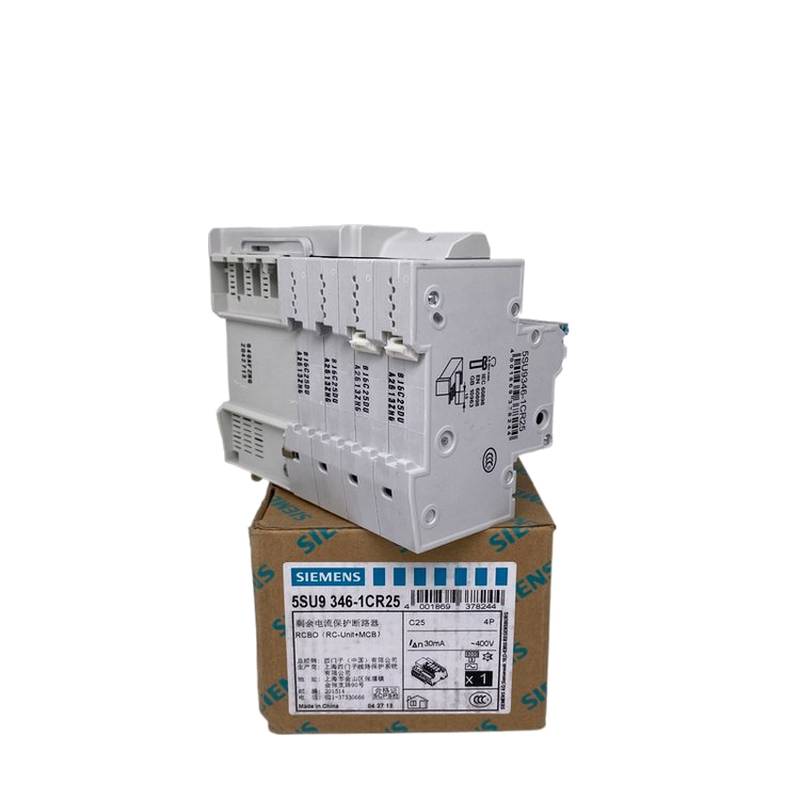
The Siemens 3RW5513-1HA14 is a sophisticated compact soft starter engineered for precise control and protection of three-phase motors. This unit excels in reducing mechanical stress during motor startup, thereby extending equipment lifespan and minimizing energy consumption. Its primary advantages lie in its smooth acceleration and deceleration capabilities, integrated bypass functionality for energy efficiency, and comprehensive motor protection features. Key technical parameters include a rated operating voltage of 400-480V AC, a rated operating current of 13A, and a maximum motor rating of 5.5kW at 400V. The device also boasts an IP20 enclosure rating for reliable operation in industrial environments.
Core Features & Market Positioning
The Siemens 3RW5513-1HA14 distinguishes itself through its advanced control algorithms and robust build quality, positioning it as a premium solution for demanding applications. Its integrated bypass ensures that once the motor reaches operating speed, the line contactor takes over, reducing heat loss and improving energy efficiency. This feature is crucial for applications requiring continuous operation. Furthermore, the comprehensive motor protection package, including overload, short-circuit, and under-voltage protection, minimizes downtime and costly repairs. Compared to direct-on-line (DOL) starters, the 3RW55 offers significantly reduced mechanical shock and electrical stress, leading to longer motor and driven equipment life, a key differentiator in the market.
Key Application Scenarios
This compact soft starter is ideally suited for a wide array of industrial applications where smooth motor control and reliable protection are paramount. Common scenarios include pump and fan control, where gradual acceleration prevents water hammer effects or system over-pressurization. It is also extensively used in conveyor systems, mixers, crushers, and compressors, where reducing the high inrush current associated with DOL starting is essential for system stability and power factor improvement. The 13A rating and 5.5kW motor capability make it a versatile choice for medium-sized industrial machinery across sectors like food and beverage, water treatment, and general manufacturing.
Practical System Integration Guidance
Integrating the Siemens 3RW5513-1HA14 into existing control systems is straightforward. The unit is designed for standard three-phase motor connections, with clear terminal designations for line and load connections. Its internal bypass contactor simplifies wiring by eliminating the need for external bypass components. For commissioning, basic parameter settings such as motor nominal current, current limit, and ramp time can be configured via the integrated keypad and display or through advanced HMI interfaces. Wiring should follow standard industrial practices, ensuring proper grounding and connection to the power supply and motor. Advanced configuration options, including I²t overload protection and various trip classes, can be accessed for fine-tuning performance to specific motor and load requirements.
Operation and Risk Mitigation
Operating the Siemens 3RW5513-1HA14 involves simple setup and monitoring. The intuitive interface allows users to adjust parameters and view operational status, including current motor load and fault indications. Risk mitigation is a core design principle, with built-in protections against common motor failure modes. These include thermal overload protection, which prevents motor burnout due to sustained high current, and electronic phase imbalance detection. In the event of a fault, the soft starter will trip, disconnecting power to the motor and displaying a specific error code on its interface to aid in rapid troubleshooting. Understanding these fault codes is critical for efficient problem resolution and minimizing operational disruption.
Scalability & Long-Term Value
The Siemens 3RW55 series offers excellent scalability and long-term value within the industrial automation landscape. These soft starters are designed to integrate seamlessly with Siemens' broader portfolio of industrial control and automation products, including PLCs and HMIs, facilitating their incorporation into larger, more complex systems. This compatibility ensures that as operational demands evolve or system upgrades are planned, the 3RW5513-1HA14 can be part of a cohesive, future-proof solution. Its robust design and advanced protection features contribute to increased equipment longevity, reducing the total cost of ownership and providing a reliable foundation for industrial operations.
Frequently Asked Questions
What is the primary function of the Siemens 3RW5513-1HA14?
This device functions as a compact soft starter for three-phase motors. It provides controlled acceleration and deceleration, reducing mechanical and electrical stress. The starter also includes integrated motor protection features.
It manages the motor's startup current and torque characteristics. This ensures smoother operation and protects connected equipment. Its primary goal is to optimize motor performance and longevity.
The 3RW5513-1HA14 is designed to enhance system reliability and efficiency. It achieves this through intelligent control and robust protective functions.
How does the Siemens 3RW5513-1HA14 reduce energy consumption?
The integrated bypass function significantly reduces energy loss. Once the motor reaches full speed, the bypass closes, and the soft starter is taken out of the main power circuit. This bypass circuitry has very low resistance.
This bypass operation means no energy is wasted through the soft starter's power electronics during normal running. This contrasts with soft starters without a bypass, which continue to dissipate energy.
Consequently, the overall energy efficiency of the motor system is improved, leading to lower electricity bills. This is especially noticeable in applications with long run times.
What types of motors can be controlled by the Siemens 3RW5513-1HA14?
The Siemens 3RW5513-1HA14 is designed for standard three-phase induction motors. It is suitable for motors with a rated power of up to 5.5kW at a voltage of 400-480V AC.
It is essential to match the motor's nominal current to the soft starter's rating of 13A. This ensures optimal performance and effective protection. The starter can be configured for various motor start-up parameters.
The compact design makes it suitable for various motor-driven applications where space is a constraint. It provides controlled starting for pumps, fans, conveyors, and compressors.
What are the key technical specifications of the Siemens 3RW5513-1HA14?
This soft starter operates at a voltage range of 400-480V AC. Its rated operating current is 13A. The maximum motor power it can handle is 5.5kW at 400V.
It features an IP20 enclosure rating, offering protection against solid objects larger than 12.5mm. The unit is designed for reliable operation in various industrial environments.
Other important specifications include its specific control voltage requirements and communication interfaces, if applicable, for integration into automation systems.
How do I install the Siemens 3RW5513-1HA14?
Installation involves securely mounting the unit in an appropriate enclosure or control panel. Ensure adequate ventilation to prevent overheating. Connect the incoming power supply to the line terminals (L1, L2, L3).
Connect the motor leads to the load terminals (T1, T2, T3) of the soft starter. For control power, connect the appropriate voltage to the control terminals. Follow the wiring diagrams provided in the manual precisely.
Always ensure the power supply is disconnected and locked out before performing any wiring or maintenance. Grounding connections are critical for safety and proper operation.
What are the common applications for this soft starter?
Common applications include controlling pumps and fans to prevent water hammer or sudden airflow changes. It is also ideal for conveyor systems, mixers, and crushers to ensure smooth starts.
The soft starter is suitable for compressors and other machinery where high inrush currents can overload the power supply. It provides controlled torque during startup.
Its versatility makes it a solution for various industries, including water treatment, manufacturing, and material handling. Any application needing controlled motor acceleration benefits.
What kind of motor protection does the 3RW5513-1HA14 offer?
The Siemens 3RW5513-1HA14 provides comprehensive motor protection. This includes overload protection, typically configured via an I²t function. It also offers phase failure detection.
The starter can also detect phase imbalance, which can lead to motor overheating. Some models may include under-voltage or over-voltage protection depending on configuration.
These features help prevent motor damage, reduce downtime, and extend the motor's service life by responding to abnormal operating conditions.
Can the Siemens 3RW5513-1HA14 be integrated with PLC systems?
Yes, the 3RW55 series can be integrated with PLC systems. This is typically achieved through digital inputs and outputs or via communication interfaces like PROFIBUS or PROFINET.
Integration allows for remote control, monitoring, and diagnostics of the soft starter. A PLC can manage start/stop commands and receive fault signals from the soft starter.
This capability enables advanced automation strategies and centralized control of motor applications within a larger industrial process.
What is the advantage of the integrated bypass on the Siemens 3RW5513-1HA14?
The integrated bypass eliminates the need for an external bypass contactor. This simplifies wiring, reduces installation time, and saves space within the control cabinet.
During normal operation, once the motor reaches its desired speed, the bypass bypasses the soft starter's power electronics. This reduces heat dissipation and energy consumption.
The bypass ensures that the motor runs at full efficiency without the power losses associated with soft starter components during continuous operation.
How do I troubleshoot common issues with the Siemens 3RW5513-1HA14?
Refer to the device's display for error codes. Consult the product manual to interpret these codes and identify the specific fault, such as overload or phase loss.
Check wiring connections for looseness or incorrect configuration. Ensure the motor's nominal current is correctly set in the starter's parameters. Verify that the control voltage is within the specified range.
If issues persist, consider environmental factors like temperature or vibration. Contact Siemens technical support for advanced troubleshooting assistance.














